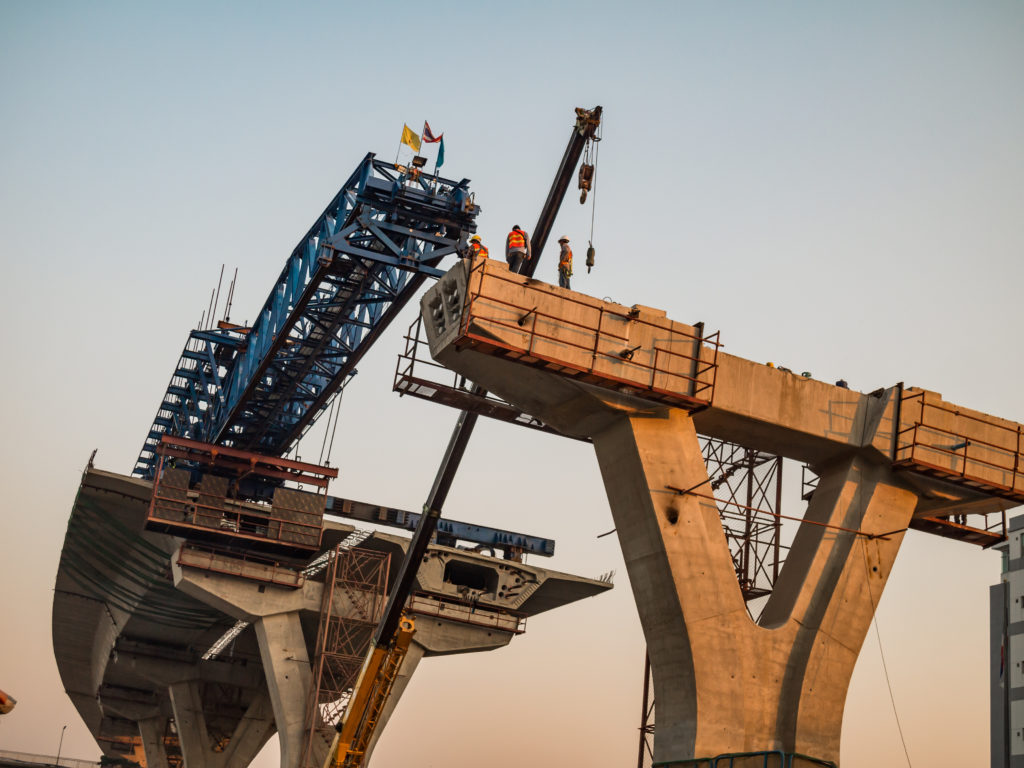A Bridge Too Far: The Role of Structural Concrete in Construction

On May 4th, 2021, passengers of a train in Mexico City did not expect their commute to end in chaos and tragedy. The metro overpass on the southside borough of Tlahuac collapsed, plunging the train—and everyone in it— to the busy intersection below.
The actual cause of this collapse is still under investigation, but it was a tragic reminder of a similar collapse in Minneapolis Minnesota in 2007 and other similar unfortunate events. Every one of these instances is different, of course, but it is a stark reminder of just how precious and necessary sound structural engineering and quality construction materials are for the longevity of structures like bridges, buildings, and overpasses.
It is quite a wonder—when one considers just how many bridges and highways are in use every day across the world— that it is still relatively uncommon for them to collapse. Their longevity is perhaps a testament to modern advancements and construction techniques implemented today. Structural concrete or reinforced concrete is a vital part of many of our structures, as it is mixed and designed to bear a heavy load.
Structural Concrete and Its Role in Construction
Everything has its foundation. Most structures you drive by or pass every day on your way to work require heavy planning that considers a variety of factors and must be built under strict guidelines and regulations. The United States is home to 617,000 bridges and today about 50% of all bridges are at least 50 years old.
Every day across this great nation about 178 million trips are taken on bridges even though, according to the American Society of Civil Engineers, many of these buildings rank as ‘structurally deficient.’ That doesn’t mean they are on the verge of collapse, however, but it does suggest they could use a structural touch-up.
Across the construction industry, concrete is a foundation for most structures. Structural concrete plays a role in more complex structures like bridges and bigger projects. When it comes to bridges, the most common structural element is the beam.
Five Common Reasons for Bridge and Structure Collapse
It’s not a scenario anyone wants to imagine. It can be catastrophic and very traumatic for a community to see one of its structures collapse before its very eyes. After all, most people trust their city officials and the people building roads and bridges to know and operate under stringent safety and quality standards.
Bridges are classified differently depending on the type of structures, functions, utility, and more. Depending on how it is built and the kind of superstructure that supports, it a bridge can be classified as an:
- Arch bridge
- Girder bridge
- Truss bridge
- Suspension bridge
Each of these types of bridges requires a different design and uses different structural support mechanisms. The materials used also vary and will have an impact on the type of maintenance and stress the bridge can withstand. Some of the most common reasons for bridge collapse include:
- Natural disasters. Mother nature’s wrath can wreak havoc on our cities and structures. Everything from earthquakes and flooding to strong winds contributes to the degradation of our bridges and other structures.
- Ineffective design. This one, of course, is far more in our control than the weather. Engineers that are tasked with designing and planning complex bridges or city structures face quite the challenge, even if they are highly competent and knowledgeable. A well-built structure with high-quality materials can still fail if the inherent design is lacking.
- Cheap materials. As with any built structure—from a residential home to a commercial building to a highway overpass— the use of cheap or substandard materials can play a role in quick degradation or sustained damage.
- Lack of maintenance. Anytime there is a structure collapse, investigations will often show that some of these were avoidable and that it was a lack of maintenance or perhaps a slip up in the maintenance that contributed to the downfall of the structure.
The 2007 collapse of the I-35W bridge in Minneapolis was subject to such scrutiny. Records would indicate that in the 1990s the structure was rated as “structurally deficient” and cited corrosion in the bearings. Engineers worked in repairing the bridge, although unable to change the bearings, deeming that it was not a major problem. In 2005, the bridge was given a rating of 50 out of 100.
The Strength of Structural Concrete in Bridges and Beyond
Structural concrete is used across the construction industry as a reliable material that is fire and weather-resistant. Concrete that has been reinforced is usually done so with steel rebar embedded within it to provide more structural support. Concrete is used as a structural foundation in anything from commercial buildings, factories, or highways.
Looking for Dependable Structural Concrete Support? Call Experienced Professionals
Here at Constructor’s Inc, we have been working with concrete for the use of roads, structures, buildings, and more. Using quality concrete for the foundation of your project is essential for longevity and safety.
Need more information about structural concrete in the New Mexico area? Call Constructos, Inc and get the quality materials you need.